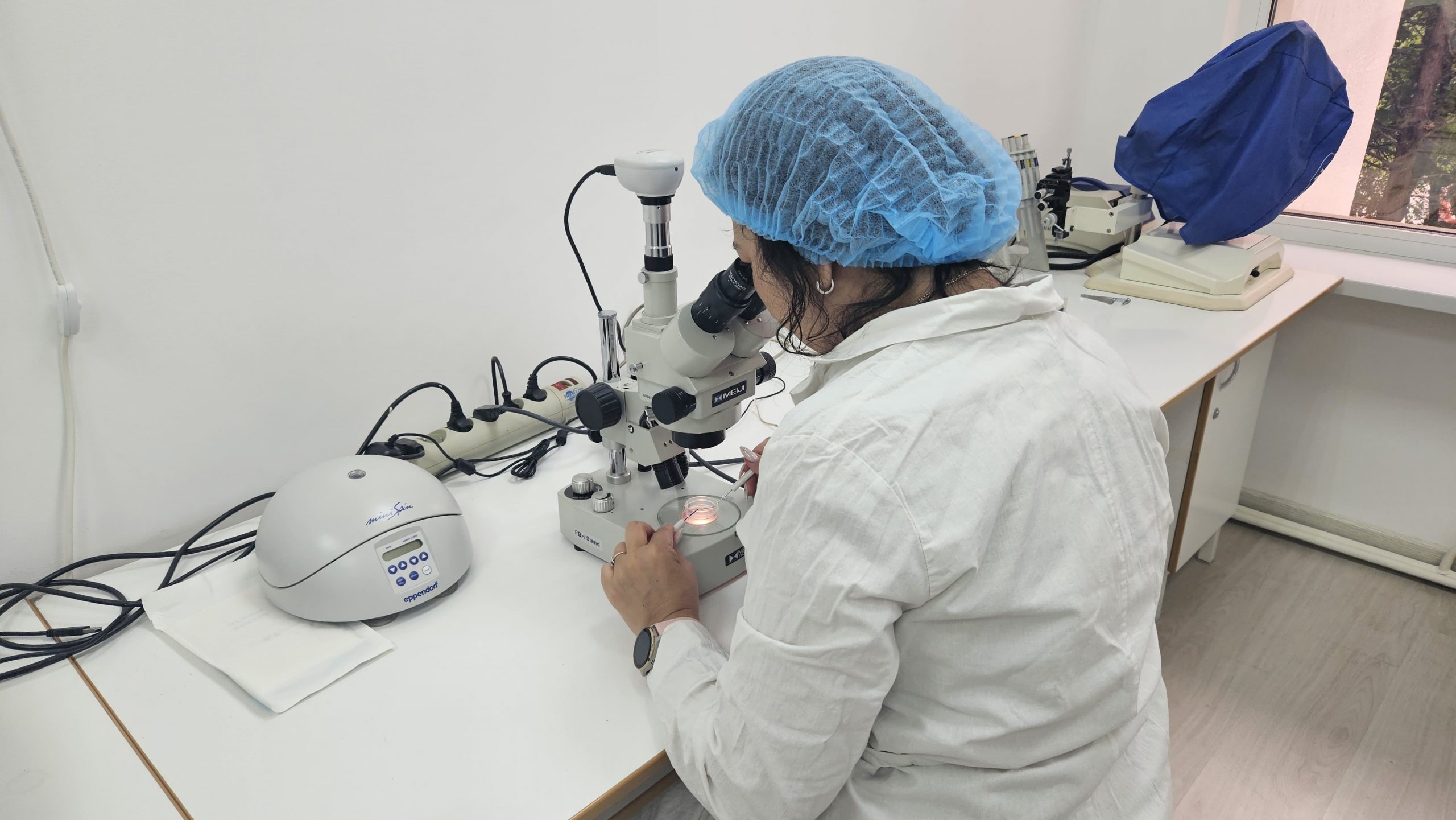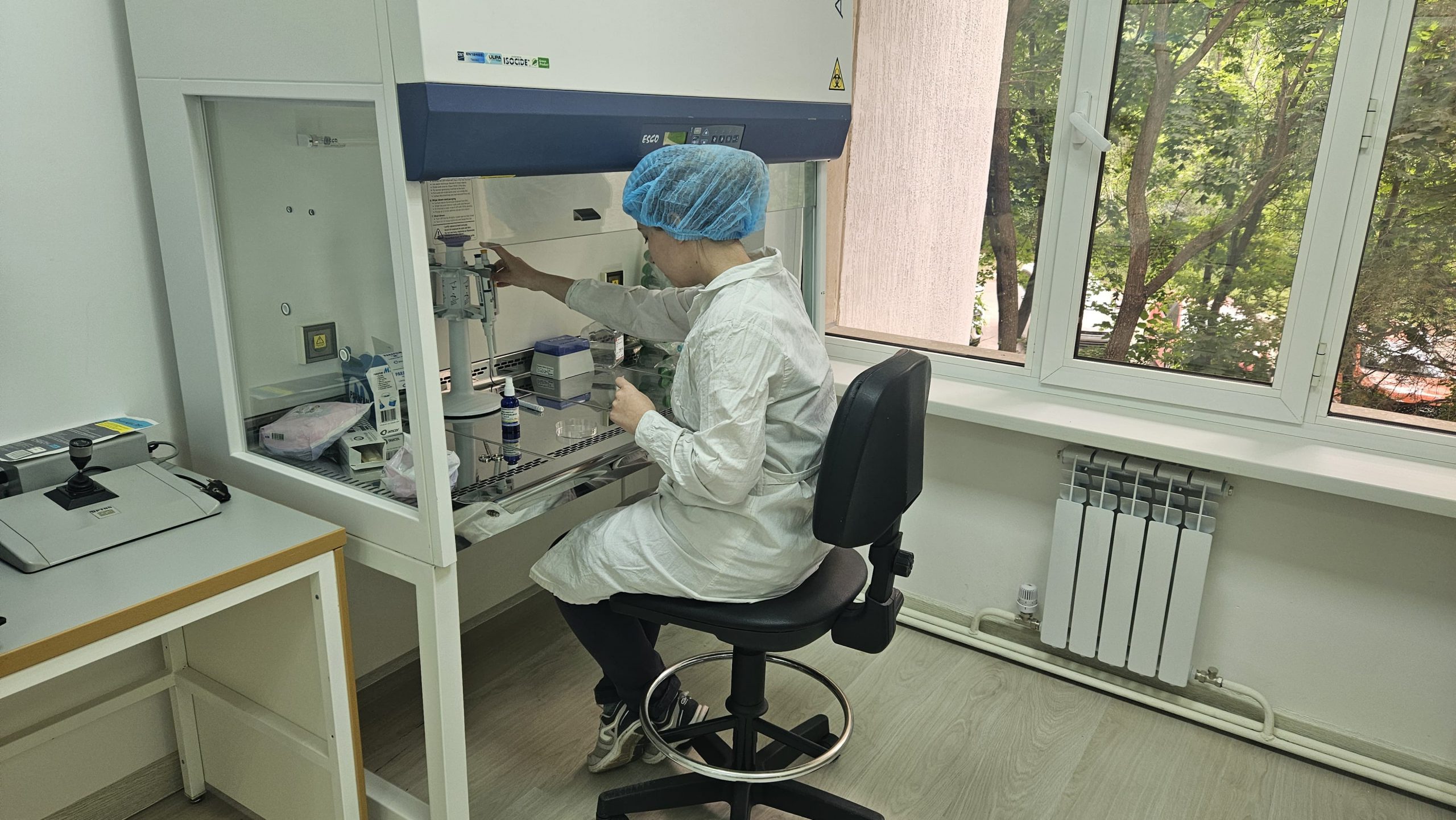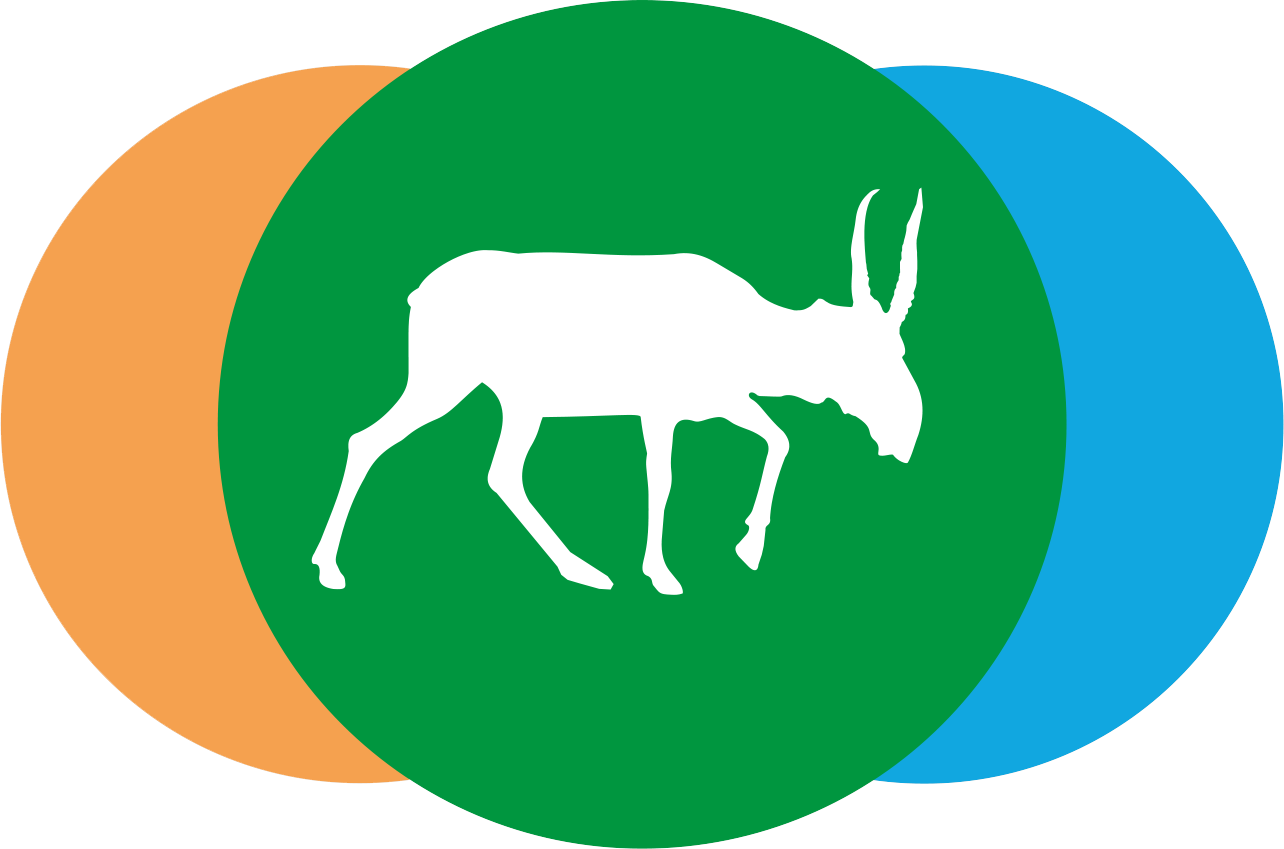Project Leader: Toishibekov Erzhan Makenovich
Implementation period: 2024–2026
IRN: AP23488891
ABOUT THE PROJECT
Project idea — to study the fundamental aspects of cloning the snow leopard (Panthera uncia). The project plans to compare two cloning techniques: the Handmade Cloning (HMC) method and the cloning method using micromanipulators (Piezo Drill). For embryo cloning, enucleated oocytes of domestic cats (Felis catus) and frozen–thawed somatic cells of the snow leopard will be used as nuclear donors. The project also aims to study the development and survival rate of cloned embryos after vitrification.
The multidisciplinary nature of the project lies in the fact that the cloning methods applied belong to several scientific fields: biology, cell biology, embryology, assisted reproductive technologies, biotechnology, and cryobiology. The implementation of the project will help assess the potential of the iSCNT (interspecies somatic cell nuclear transfer) method for the conservation of the genetic diversity of Kazakhstan’s wildlife.
The object of research is frozen somatic skin cells of an adult snow leopard (Panthera uncia).

Relevance
At present, there is an urgent need to explore the scientific foundations for the rational use of somatic cells (fibroblasts) stored in cryobanks. It should be emphasized that the research object of this project is an endangered species — the snow leopard (Panthera uncia), listed in the International Red Book. Its study at various biological levels enables Kazakhstan to make a significant contribution to the conservation of biodiversity of rare species.
The project involves not only maintaining the species in zoo conditions but also preserving its frozen germplasm. The scientific innovation of this research lies in studying the fundamental aspects of snow leopard (Panthera uncia) cloning through interspecies transfer of somatic cell nuclei using cryopreserved snow leopard cells and enucleated oocytes of domestic cats, as well as investigating the survival of vitrified cloned embryos. To date, no similar studies have been conducted in Kazakhstan.
Project goal
To study the fundamental aspects of interspecies transfer of snow leopard (Panthera uncia) somatic cell nuclei into enucleated oocytes of domestic cats (Felis catus) for cryopreservation of the biodiversity of Kazakhstan’s wildlife.
Project objectives
1. To study the effect of different compositions of culture media on in vitro maturation (IVM) of immature domestic cat oocytes (in vitro maturation), including the influence of such components as FSH, LH, and serum albumin on the maturation process.
2. To develop a method for removing the zona pellucida of oocytes. To study the effects of different concentrations of hyaluronidase on the denudation of at least 100 domestic cat oocytes.
3. To study the efficiency of various concentrations of demecolcine in the medium for removing the pronucleus from domestic cat oocytes.
4. To examine the efficiency of pronucleus removal and somatic cell nucleus transfer using micromanipulators.
5. To assess the efficiency of microsurgical pronucleus removal from mature cat oocytes to create cytoplasts using the Handmade Cloning (HMC) method and the Piezo Drill micromanipulation technique.
6. To study the effects of different combinations of electric current and chemical methods for fusing cytoplasts and somatic cells. To evaluate three different combinations of direct current (DC) and various concentrations of phytohemagglutinin (PHE) on the fusion of domestic cat cytoplasts with snow leopard somatic cells.
7. To investigate the effects of calcium ionophore and its different concentrations on the development of cloned embryos, and the impact of sperm extract on embryo activation.
8. To study the effects of different in vitro culture methods on cloned embryo development (in vitro culture), comparing two approaches: cultivation in a CO2 incubator and the Submarine Incubation System (SIS).
9. To evaluate the viability of cloned embryos after in vitro cultivation up to the blastocyst stage.
10. To examine the viability of cloned embryos after vitrification at −196°C.
11. To assess the viability of cloned embryos after ultrafast vitrification at −205°C.
12. To prepare methodological recommendations for domestic cat oocytes on in vitro maturation (IVM) and in vitro culture (IVC). To publish articles in peer-reviewed international scientific journals in accordance with the requirements for fundamental research in the natural sciences.

Expected results
- The fundamental aspects of interspecies transfer of snow leopard (Panthera uncia) somatic cell nuclei into enucleated cat oocytes (Felis catus) for cryopreservation of wildlife biodiversity will be studied, along with the survival of cloned embryos after vitrification and ultrafast vitrification (VitMaster vitrificator).
- The composition of the culture medium for efficient in vitro maturation of domestic cat oocytes will be optimized, determining the optimal concentrations of FSH, LH, and serum albumin.
- An effective method for zona pellucida removal using hyaluronidase will be developed, and a pronucleus removal protocol using demecolcine will be refined. The efficiency of various nuclear transfer methods, including micromanipulators (Piezo Drill) and the Handmade Cloning method, will be compared.
- Optimal parameters of electric current and phytohemagglutinin concentration for fusing cat cytoplasts with snow leopard somatic cells will be determined.
- The influence of calcium ionophore and sperm extract on cloned embryo activation will be investigated.
- A comparative evaluation of two cultivation methods (traditional CO₂ incubator and the Submarine Incubation System, SIS) will identify the most effective approach for embryo development up to the blastocyst stage.
- Methods of cryoconservation, including slow vitrification at −196°C and ultrafast freezing at −205°C, will be studied, with subsequent assessment of embryo viability after thawing.
- Based on the research results, methodological guidelines on in vitro maturation and cultivation of domestic cat oocytes will be prepared, and scientific articles will be published in peer-reviewed international journals.
PROJECT TEAM:
Toishibekov Erzhan Makenovich – Doctor of Biological Sciences, Associate Professor, Chief Researcher, Laboratory of Cryobiology and Biobank of Wild Animal Germplasm of Kazakhstan. ORCID ID: 0000-0001-6060-0612, Researcher ID: K-5014-2019, Scopus Author ID: 54880591400, h-index 3
Nurkenov Tulendy Tuleshevich – PhD, Head of the Laboratory of Cryobiology and Biobank of Wild Animal Germplasm of Kazakhstan. ORCID ID: 0000-0002-9391-2214, Scopus Author ID: 57330786200, h-index 1
Grachev Aleksey Aleksandrovich – Master of Natural Sciences, Acting Head of the Laboratory of Theriology. ORCID ID: 0000-0001-6051-8299, Scopus Author ID: 57873983000, h-index 2
Salmenova Madina Erkenovna – Master of Biology, Researcher, Laboratory of Cryobiology and Biobank of Wild Animal Germplasm of Kazakhstan. ORCID ID: 0000-0002-4839-9706, h-index 0
Toishybek Dinmukhamed Erzhanuly – Bachelor of Biology, Junior Researcher, Laboratory of Cryobiology and Biobank of Wild Animal Germplasm of Kazakhstan. ORCID ID: 0000-0002-5664-3289, Scopus Author ID: 57204921230, h-index 1
RESEARCH RESULTS
(as of 2024)
The study examined the effects of different compositions of culture media on the in vitro maturation (IVM) of immature domestic cat oocytes, as well as the effects of various components — follicle-stimulating hormone (FSH), luteinizing hormone (LH), and serum albumin — on in vitro maturation, and of different concentrations of hyaluronidase on oocyte denudation.
A method for zona pellucida removal was developed. The efficiency of pronucleus removal and somatic cell nuclear transfer using Narishige micromanipulators (Piezo Drill) was studied.
The project results will make a significant contribution to the development of assisted reproductive technologies for the conservation of rare feline species.
